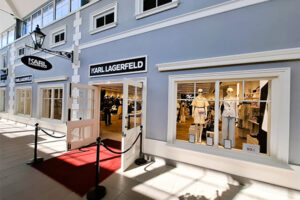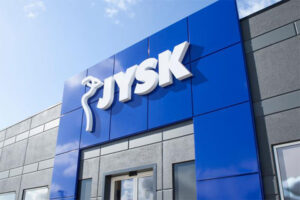BY JONATHAN DOUGHTY
As the foodservice industry is such a dynamic, rapidly changing sector, it is something that we do each year to ensure that we, and our clients, are ready to adapt and capitalize on the “next big thing.” Some of the trends we predict materialize and others do not, while some have a bigger impact than others.
Ten years ago, we predicted the importance and impact that foodservice would have in retail environments and how it would “punch above its weight” in terms of space requirements, tenants’ desires to trade in the best retail locations, and the influence it would have on creating and defining the guest experience. We were proved right and the rest, they say, is history.
This year, we have identified 15 key themes and ideas that will be important to the industry for the next 12 months and longer. In this article, I thought that I would take three of these trends that we believe will have the most impact on the shopping center industry and go into a bit of detail on each of them for you.
ALL THE WORLD’S A STAGE
Eating out today is more than just a way to refuel, it is now an experience to be enjoyed. The experience is enjoyed in two distinct ways, physically, in person, and then often just as importantly the experience is “shared” with the world online.
There are some great examples from all ends of the foodservice spectrum on how to create an experience and many of them have nothing at all to do with the food itself. Sixty is a restaurant in Moscow where, every two hours, they open the windows 60 floors up and play a popular piece of classical music while guests wander over to the windows to enjoy uninterrupted views of
the city. At the end of the song everyone walks back to their table and continues their meal. This unique experience creates a buzz across the whole restaurant before, during, and after the windows have opened.
People take videos and photographs of these experiences that are instantly uploaded to the internet. It is therefore critical for both restaurants and shopping centers to have the right level of technology that is easily accessible to their guests, in order to allow them to market the experience for you. Sharing the location, the food, the theater is just as important as the experience itself.
“The trend for pop ups or ‘Restaurants Without Tenants’ (RWTs) shows no sign of going away; if anything it is growing.”
EXCLUSIVELY RANDOM
The trend for pop-ups or “Restaurants Without Tenants” (RWTs) shows no sign of going away; if anything it is growing. Pop-up restaurants range from the simple to the ultra high end, but what they all have in common is that element of exclusivity. Due to the temporary nature of their existence, they create a “moment in time” which, when it is gone, is gone. This plays very well with the trend for creating an experience.
One of the best examples of a foodservice pop-up I have tried recently was at B.I.G., a mile-long street food festival held in a transport tunnel in Nice, France, which was hosted for the city as part of the World Cuisine Summit. Compare this community experience to the ultra-exclusive “Cube” hosted by Electrolux, which traveled around Europe with different Michelin Star chefs using it for a week or a month at a time and cooking and serving exclusively for just twelve to 15 guests a night.
The benefit for shopping center landlords who have the space and ability to successfully combine RWTs into their overall offer are many and varied. A group of temporary restaurants can drive footfall by creating a “food festival,” like Kerb in London. Done properly, creating additional capacity for foodservice will help alleviate queues during those peak periods, at weekends or at Christmas, without necessarily impacting the existing tenants. A frequently changing offer gives customers a reason to come back to the center because they know that there will be something new to try. RWTs can even be used to fill temporary voids in high footfall locations while new retail tenants are found and signed up.
DINING DIVERSITY
More people are eating out more often and that means that foodservice spaces need to cope with an ever increasing range of diverse guests. The difficulty comes when these different user groups, all with different needs, want to use the same spaces and places, often at the same time.
The business traveler, the group of students, and the young family all want to eat in the new trendy food court with fast fresh food, but how can we create an inclusive area that meets the different needs of them all?
We work on developing food courts all over the world and one of the key differentiators that we are incorporating into our designs is the ability to deliver flexibility in the space and a number of different zones. Spaces that are attractive to different users, quiet spaces with individual tables and power outlets for the “suits,” easily accessible safe spaces for families, and large communal tables with all the latest gadgets and hyper speed WiFi for the young and trendy teens.
Food courts traditionally have been a “leveler,” bringing the rich and not-so-rich together to eat in one space. They are classically all things to all people. This used to be achieved by delivering everything at a very basic level, but that is not what guests want anymore. Even the most basic foodservice offer needs to deliver an experience that engages every guest and that can only be achieved through well thought-out, intelligent design.
These are just three of the key trends that we predict will grow in importance in the future. If you would like to know more about the “15 for the Future,” please contact us and we would be happy to arrange a time to review with you and to discuss your future requirements.
The ultra-exclusive “Cube” hosted by Electrolux traveled around Europe with different Michelin Star chefs using it for a week or a month at a time and cooking and serving exclusively for just twelve to 15 guests a night.
What is your opinion on this topic? Discuss it with us! Send your opinion to opinion@across-magazine.com !






